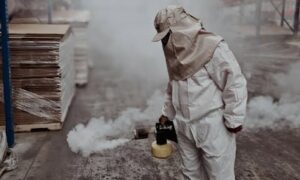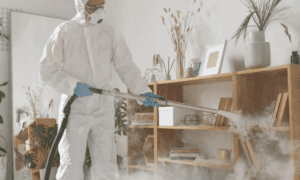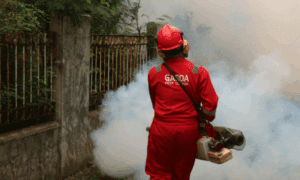Regular pest inspections are a critical aspect of maintaining a safe and healthy home environment. Pests, such as termites, rodents, and other insects, can cause significant damage to your property and, in some cases, can pose health risks. It’s important for you to know how often you should schedule these inspections to protect your home from unwanted infestations.
The frequency of pest inspections can depend on a variety of factors, including the type of pests common in your area, the age and condition of your home, and any history of pest problems. As a general rule, it is recommended that you engage with professional pest control services at least once a year. However, if you live in an area prone to termites or other destructive pests, or if you have had pest issues in the past, more frequent inspections may be necessary.
Moreover, if you are planning to purchase a new home, getting a pest inspection before finalizing the deal is imperative. This ensures that you are not inheriting any hidden pest problems that could lead to costly repairs down the line. For homeowners, being proactive with regular pest inspections is a smart investment in preserving the value and integrity of your property.
Importance of Regular Pest Inspections
Regular pest inspections are crucial for maintaining the integrity of your home and the health of its occupants. These inspections are key to stopping infestations before they begin and catching any unexpected pests early on.
Preventive Measures
Regular inspections act as a first line of defense against pests. By scheduling routine checks, you can ensure that your home remains safeguarded against common invaders such as termites, rodents, and insects. Pest professionals are trained to identify conditions conducive to infestations and can provide you with tailored advice to fortify your home against pests. This includes sealing cracks, proper waste management, and recommendations for suitable landscaping practices to reduce the appeal of your home to unwanted critters.
Early Detection of Pest Infestations
The early detection of pests is crucial as it often results in more manageable and less costly remediation. During a pest inspection, professionals look for signs of activity, such as droppings, damage to wood structures, or nests. Discovering these signs early can prevent extensive damage to your property and protect your health from potential disease vectors. Following each inspection, you’ll receive a detailed report on any findings and subsequent steps you should take to address issues before they escalate.
Recommended Frequency of Pest Inspections
Regular pest inspections are crucial for maintaining a pest-free environment in both residential and commercial properties. These inspections mitigate the risk of infestation and the associated damage pests can cause.
Residential Properties
For your home, it is generally advised to have a pest inspection at least once a year. If you live in an area prone to certain pests like termites, or if there have been previous infestations, biannual inspections may be necessary to ensure your home remains protected.
Commercial Properties
In the case of commercial properties, the frequency of pest inspections should typically be higher. Every 6 months is standard, especially for businesses that handle food, like restaurants or warehouses, as they are more susceptible to infestation. Regular monitoring and preventative measures are key to maintaining a safe and compliant business environment.
Factors Influencing Inspection Frequency
When determining how often you should schedule pest inspections, several factors play a critical role, ensuring the longevity and safety of your property.
Climate and Seasonality
The climate in your region significantly affects the types of pests you may encounter and how active they are at different times of the year. For instance, warmer climates often require more frequent inspections, as the increased temperatures can harbor year-round pest activity. Conversely, if you experience cold winters, you might find that pest problems decline during these months, meaning you can space out inspections further apart.
Previous Infestation History
If your home has previously suffered from infestations, it’s crucial to have more frequent pest inspections. Following an infestation, residual populations might linger, necessitating closer monitoring to prevent a recurrence. Keep a record of past infestations to help determine the needed inspection frequency.
Type of Property
Different structures face varying levels of pest pressure. A single-family home may not require inspections as frequently as a multi-unit apartment complex where pests can easily spread from one unit to another. Furthermore, businesses handling food or healthcare facilities typically need more regular inspections due to the higher stakes of contamination. Consider your property type when deciding on inspection intervals.
Consequences of Neglecting Pest Inspections
Neglecting regular pest inspections can lead to health risks, structural damage to your property, and significant financial implications.
Health Risks
When you skip pest inspections, you expose yourself and your family to potential health hazards. Pests can carry diseases, such as hantavirus from rodents or salmonella from cockroaches. Additionally, the presence of pests can exacerbate allergies and asthma, especially in children.
Structural Damage
Pests like termites and carpenter ants can silently compromise the integrity of your home. These insects specifically target wood, which can lead to extensive structural damage. Without routine inspections, these damages can go unnoticed until they become severe, risking your safety.
Financial Implications
Undetected infestations can result in high costs due to the need for more extensive control measures and property repairs. The longer pests are left unattended, the more expensive it is to eliminate them and rectify the damage. Regular inspections can save you a substantial amount of money in the long run by preventing large-scale infestations.



































